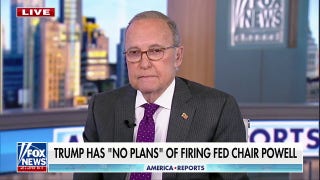Fed minutes: Strong economy supports rate hikes
Policy makers at the Federal Reserve remain focused on gradually raising interest rates in response to strength in the U.S. economy and low unemployment, according to minutes of their September meeting released Wednesday.
The central bank hiked short-term rates during the meeting, the third increase of 2018. Officials have steadily lifted rates since 2015 as they seek to move closer to a level of interest rates that will neither boost nor slow economic growth. The Fed continues to debate the precise short-term neutral rate, while its median estimate for a long-run neutral rate is 3 percent.
Members of the Federal Open Market Committee voted unanimously to raise the benchmark federal funds rate to a range of 2 percent to 2.25 percent last month. Based on current economic forecasts, the Fed expects to boost rates once more in 2018, followed by three rate hikes in 2019.
“Participants generally anticipated that further gradual increases in the target range for the federal funds rate would most likely be consistent with a sustained economic expansion, strong labor market conditions, and inflation near 2 percent over the medium term,” the Fed’s minutes said.
Fed Chairman Jerome Powell has said the central bank will monitor interest rates to avoid raising them too quickly, which could hamper U.S. growth.
President Trump has recently renewed criticism of the Fed and its interest rate hikes. Following the rate increase in September, Trump said he was “not happy” with the decision.
“I’d rather pay down debt or do other things, create more jobs,” he said. “I’m worried about the fact that they seem to like raising interest rates. We can do other things with the money.”
Trump said Tuesday in an interview on FOX Business’ “Trish Regan Primetime” that the Fed is his “biggest threat” because it’s raising rates “too fast.”
Also in the minutes, the central bank said it anticipates a “relatively modest” impact to the economy from Hurricane Florence. Officials also noted that aluminum and steel tariffs have weighed on investments in the energy sector.




















